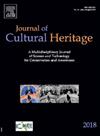AI-based experts’ knowledge visualization of cultural heritage: A case study of Terracotta Warriors
IF 3.5
2区 综合性期刊
0 ARCHAEOLOGY
引用次数: 0
Abstract
Advancements in 3D modeling, digital display technologies, and the growing availability of digital cultural heritage data have significantly improved the accuracy of heritage depictions and expanded opportunities for analysis. However, while many studies focus on presenting specific cultural heritage figurines, an often overlooked aspect is the visualization of the Terracotta Warriors as a unified entity. This involves concisely representing the distribution of features and their relationships, providing a clear and insightful presentation that engages practitioners, academics, and wider audiences. To tackle the challenges mentioned above, this research seeks to explore the application of AI methods in processing cultural heritage data. It aims to optimize and augment the dataset, analyze the distribution and relationships of various attributes, and interpret the analysis results through visualization techniques. The Terracotta Warriors, among China’s most significant cultural heritages and renowned for their abundance, exquisite workmanship, and magnitude, are chosen as a case study. The contribution of this paper is primarily twofold. Firstly, we constructed a dataset of Terracotta Warriors from Pit No. 1, detailing the attributes significant for identifying different Terracotta Warriors. Secondly, we employ various AI methods, such as generative adversarial network(GAN) and random forest, to process and analyze these attributes, followed by visualizing the analysis results for an intuitive presentation. This study introduces a novel scheme for presenting information on a collection of cultural relics, offering a practical case for analyzing and visualizing the Terracotta Warriors’ attributes as a whole entity, rather than showcasing individual relics’ information in isolation. This approach can be applied to other cultural heritage artifacts, such as Chinese ceramics, and supports further multidisciplinary research, including AI-based cultural heritage analysis, processing, and presentation.
基于人工智能的专家文化遗产知识可视化——以兵马俑为例
3D建模、数字显示技术的进步以及数字文化遗产数据的日益可用性大大提高了遗产描述的准确性,并扩大了分析的机会。然而,当许多研究集中在展示特定的文化遗产雕像时,一个经常被忽视的方面是兵马俑作为一个统一的实体的可视化。这包括简洁地表示特征的分布和它们之间的关系,为从业者、学者和更广泛的受众提供一个清晰而深刻的展示。为了应对上述挑战,本研究试图探索人工智能方法在处理文化遗产数据中的应用。它旨在优化和扩充数据集,分析各种属性的分布和关系,并通过可视化技术解释分析结果。兵马俑是中国最重要的文化遗产之一,以其数量众多、工艺精湛、规模庞大而闻名。本文的贡献主要有两个方面。首先,我们构建了1号坑兵马俑的数据集,详细描述了识别不同兵马俑的重要属性。其次,我们采用各种人工智能方法,如生成对抗网络(GAN)和随机森林,来处理和分析这些属性,然后将分析结果可视化,以直观的方式呈现。本研究提出了一种全新的文物信息展示方案,为将兵马俑的属性作为一个整体进行分析和可视化,而不是孤立地展示单个文物的信息提供了一个实际案例。这种方法可以应用于其他文化遗产,如中国陶瓷,并支持进一步的多学科研究,包括基于人工智能的文化遗产分析、处理和展示。
本文章由计算机程序翻译,如有差异,请以英文原文为准。
求助全文
约1分钟内获得全文
求助全文
来源期刊

Journal of Cultural Heritage
综合性期刊-材料科学:综合
CiteScore
6.80
自引率
9.70%
发文量
166
审稿时长
52 days
期刊介绍:
The Journal of Cultural Heritage publishes original papers which comprise previously unpublished data and present innovative methods concerning all aspects of science and technology of cultural heritage as well as interpretation and theoretical issues related to preservation.
 求助内容:
求助内容: 应助结果提醒方式:
应助结果提醒方式:


